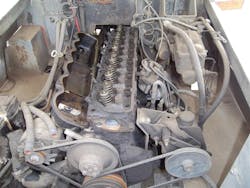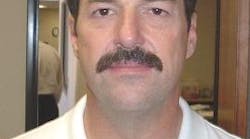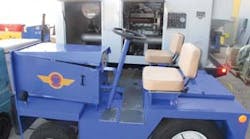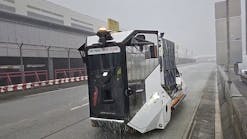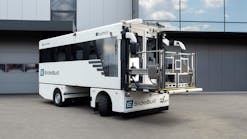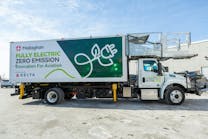When I first joined Matheson a little more than 10 years ago, the United States Postal Service outsourced what it defined as "Terminal Handling Services" across the United States. These companies functioned as an intermediary between the USPS and its aviation supplier FedEx by building up originating mail and breaking down and sorting mail at its destination city.
Matheson bid on this terminal handling services work and was successful in winning several contracts across the western United States. With a very limited amount of time to start up operations, however, we needed to purchase a large amount of GSE to help us launch Matheson into the ground support business.
Once the company began looking at the cost of the new equipment, however, it quickly became obvious we needed to look at used, refurbished or rebuilt equipment to defer the cost of capital in purchasing new.
The lessons we learned in the search for equipment were instrumental in how we handle our equipment needs today and a true understanding of what is a rebuilt vs. refurbished piece of equipment can make a significant difference to the quality of the unit.
What do we consider the difference between rebuilt and refurbished?
The most simplistic way to define either term is to say rebuilt is like a “frame off restoration.” The unit is taken down to its bare bones and new parts, engines, transmissions, wiring, tires and associated parts are installed and the unit is painted and ready for market.
Comparatively a refurbished unit is best described as “flipping the unit.”
Any major repairs needed are addressed. The unit is given a heavy PMI (preventative maintenance inspection) and a new coat of paint and then made ready for market. The difference is a like new unit versus a used unit.
Our Matheson standards are very high for our equipment as a result of our experience in operating over-the-road trucks where reliability is critical to providing service. Matheson has been in the business of transporting mail for more than 45 years and we operate more than 400 trucks that run in excess of 40 million miles per year with an outstanding safety record.
Our long history of tractor and trailer maintenance provided the foundation for establishing our own internal GSE program. We created a metric for our baggage tractors to categorize what we would rebuild and what we would refurbish. If the unit is more than 75 percent worn out, we rebuild. If the equipment is less than 75 percent worn out, we refurbish.
We complete the following work to rebuild a unit:
- Remove and replace all unit wiring.
- Remove and replace engine and transmission mounts.
- Replace the engine and transmission.
- Remove and replace steering linkage.
- Remove and replace the exhaust system.
- Remove and replace seal/bearings in rear end.
- Replace all bolts with grade 8v111 bolts and nuts.
- Replace all gages and switch panel.
- Boil out the radiator or replace as necessary.
- Prime and paint the shell.
- Replace door hinges, latches, and windows.
- Replace the entire brake system.
- Replace lights with LEDs for more efficiency.
- Install new bumper guards.
- Install new seats and rails.
Technical Note: Equitech tractors have two different reservoirs; one for the main case and one for the gear reduction. You must establish a practice to ensure both reservoirs are checked to avoid costly repairs. Checking the fluid levels on a regular basis could avoid a serious and costly repair to the ring and pinion.
By contrast, we complete the following work to refurbish a unit:
- Complete a heavy preventative maintenance inspection.
- Repair any major or minor defect found.
- Inspect and adjust brakes.
- Inspect and tighten tow hitch.
- Inspect tire tread depth, replace if less than 2/32.
- Repaint or touch up paint on the unit.
The basic difference between the rebuilt and the refurbished unit is that the rebuilt tractors has higher grade parts and looks and operates as new. The cost of the rebuilt vehicle can be depreciated over its now new, longer life cycle. In the end, a rebuilt piece of equipment is a more reliable and more esthetic-looking unit that enhances the company’s image.
